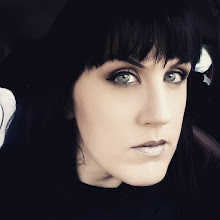Trouble is, Nell has issues with her "nerves" and soon Hill House is bringing out the worst in her - or is she bringing out the worst in Hill House? In Dale Bailey's book-length study, American Nightmares: The Haunted House Formula in American Popular Fiction, he posits the idea that Shirley Jackson was the first author to remove the ghosts from the haunted house, and to make the house itself an evil entity - Hill House, in his words, was the first house to be "born bad". This is something the film plays with, and as Nell regresses into her bad memories surrounding the death of her mother and her subsequent guilt about the part she played in it, so the disturbances in the house increase.
I firmly believe The Haunting is a masterclass in representing a haunting, since the film relies on shadow, suggestion and sound to make its point. Whereas the utter balls-up of a remake in 1999 relied on poorly rendered CGI and an idiotic plot to tells its story, thereby removing all semblance of fear or suspense, the original builds up the suspense through a careful use of structure, and implication to make you imagine what could possibly be going on. It's not surprising - director Robert Wise cut his teeth working with producer Val Lewton at RKO in the 1940s, working on a series of films notorious for their use of shadow and suggestion over prosthetics and gore. Val Lewton even described their process, saying that if you made a screen dark enough, people will read things into that darkness, and Robert Wise does the same - and more.
You have to remember that horror in the 1960s was different from the derivative torture-porn crap that it is today. Psycho had just revolutionised the genre by proving that not even your top billed star was safe from the chop, and both Hammer and Roger Corman were revelling in the possibilities afforded by Technicolor for lush period pieces starring Christopher Lee or Vincent Price. The Haunting isn't an anomaly by any stretch, but it does make an effort to engage with character on a deeper level than most. It also starts to fully explore the possibilities of setting, turning Hill House itself into the fifth character in the film.
I don't want to say too much because I really want you to go and watch this, if you haven't already, but two of the scariest scenes in the film rely on sound. You see nothing - but by gumdrops, you hear plenty. What do you hear? No one actually knows - it's as much up to you to interpret the sound as it is the characters within the film. Whatever I might imagine will be totally different to whatever you imagine - and that's the key. Monsters just are not scary - look at the monsters from the 1930s, they've become pop culture icons. But something you can't see, and can only imagine? Brrrr....
I'll leave you with this clip, from near the end of the film. Dr Markway, Luke, Nell and Theo have taken refuge downstairs, only something wants to join them...









5 comments:
I haven't seen this one - will have to do so!
I remember reading Shirley Jackson's short story The Lottery in high school. It was sufficiently creepy, but this sounds even more so!
I love the original! It's the same with Psycho. These days "Horror" seems to be defined as how much gore can they put into a movie. These were made back when you had to actually build suspense. Nothing beats them.
Elliot
We Are Adventure
Interesting that both this one and The Woman in Black were both written by women...
I think you're showing your Ph D studies in your analysis of this one, one if the most intelligent break downs I've ever read. When I think if Rose Red (one if my favorite Stephen King haunted house stories) I always think this trail blazer.
Post a Comment